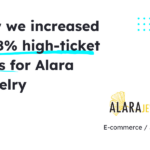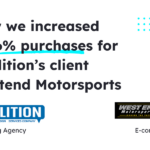
Marketing is an essential aspect of any business, be it B2B or B2C. However, the strategies and channels employed in B2B marketing can differ significantly from those used in B2C marketing. B2B (business-to-business) marketing is a type of marketing that involves selling products or services to other businesses or organizations. In contrast, B2C (business-to-consumer) marketing focuses on promoting products or services directly to consumers.
While both B2B and B2C marketing share some similarities, such as the use of social media, email marketing, and content marketing, there are several differences. For instance, B2B marketing usually targets decision-makers within an organization, while B2C marketing targets individual consumers. Additionally, B2B sales cycles are typically longer and involve more complex decision-making processes than B2C sales cycles.
With these differences in mind, it’s essential for B2B marketers to choose marketing channels that are effective for their target audience. We’ll discuss the top 8 marketing channels for B2B success in 2023. We will explore each channel’s unique features and how they can be leveraged to achieve success in B2B marketing.
1. SEO: Improve Your Online Presence and Drive Long-Term Success
SEO can help you by increasing your visibility in search results, driving more organic traffic to your website, and ultimately generating more leads and revenue.
One of the primary benefits of SEO for B2B businesses is that it can help you reach a wider audience of potential customers. By optimizing your website and content for relevant keywords and phrases, you can ensure that your business appears in search results when prospects are actively searching for solutions to their problems or needs.
Another benefit of SEO is that it can help establish your brand as an authority in your industry. By consistently publishing high-quality content that provides value to your target audience, you can build trust and credibility with prospects and position your business as a thought leader in your space.
Some Best Practices for B2B SEO Include:
- Conducting keyword research to identify relevant keywords and phrases that your target audience is searching for.
- Optimizing your website and content for those keywords.
- Creating high-quality and informative content that provides value to your audience.
- Building high-quality backlinks from other reputable websites.
- Optimizing your website for mobile devices.
- Ensuring that your website is fast and responsive.
- Using descriptive and keyword-rich meta titles and descriptions.
- Leveraging schema markup to enhance your search engine listings.
There are also several tools and resources available to help B2B businesses with SEO. Some popular tools include Google Analytics, Google Search Console, SEMrush, Ahrefs, and Moz. These tools can help you track your website traffic, monitor your search engine rankings, identify opportunities for improvement, and track the effectiveness of your SEO efforts over time.
In addition to these tools, there are also many online resources available to help B2B businesses learn more about SEO and stay up-to-date with the latest best practices and trends. Some popular resources include Moz’s SEO Learning Center, Search Engine Land, and the Google Webmasters blog.
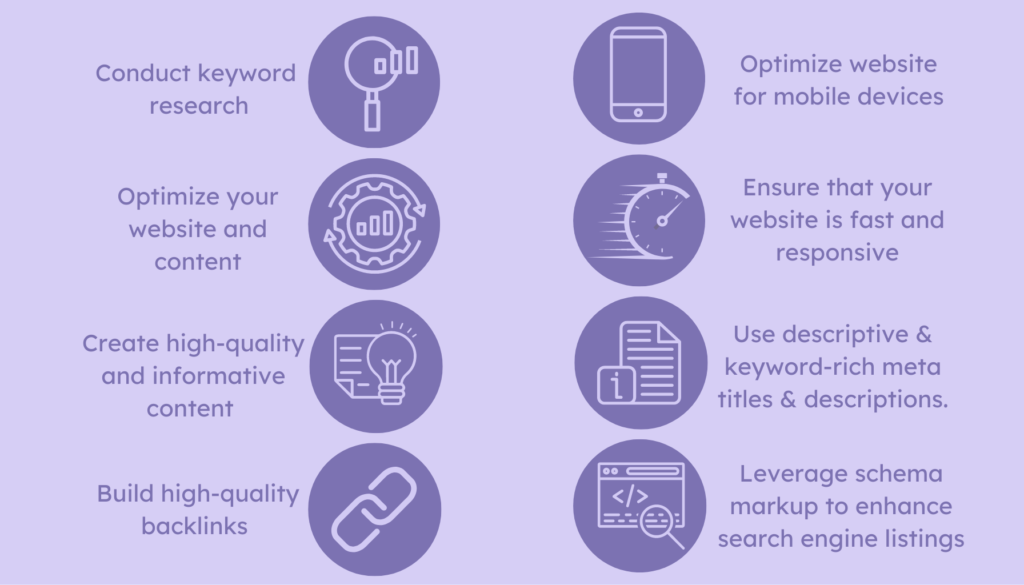
2. Pay-Per-Click Advertising (PPC): Targeted Campaigns to Drive Quality Traffic
Pay-Per-Click Advertising (PPC) is a form of digital advertising where you pay to have your ads displayed to a targeted audience. PPC can help you by driving traffic to your website, increasing brand visibility, and generating leads and sales.
One of the primary benefits of PPC that drive B2B success is that it allows you to target specific audiences based on factors like demographics, interests, and behavior. By targeting the right people with the right message, you can increase the likelihood of converting those users into leads and customers.
Another benefit of PPC for B2B success is that it provides a high degree of control and flexibility over your advertising campaigns. You can set specific budget limits, adjust bids based on performance, and run multiple campaigns simultaneously to test different strategies and messaging.
Some Best Practices for B2B PPC Include:
- Conducting thorough keyword research to identify relevant search terms and phrases.
- Creating high-quality ad copy that speaks to your target audience’s pain points and needs.
- Optimizing your landing pages for conversions.
- Use negative keywords to avoid wasting ad spend on irrelevant clicks.
- Using ad extensions like site links and callouts to provide more information and encourage clicks.
- Monitoring your campaigns closely to identify opportunities for improvement and make adjustments as needed.
There are also several tools and resources available to help B2B businesses with PPC. Some popular tools include Google Ads, Bing Ads, and Facebook Ads Manager. These platforms provide powerful tools for targeting, bidding, and measuring the effectiveness of your campaigns.
3. Email Marketing: Nurturing Your B2B Relationships
Email marketing is a powerful tool to reach your target audience, engage with your customers and prospects, and ultimately drive conversions. In fact, according to a study by HubSpot, 41.5% of brands say that email marketing is very critical to business success.
One of the biggest advantages of email marketing is its ability to personalize messages based on the recipient’s behavior, preferences, and demographics. By segmenting your email list and tailoring your messages to specific groups, you can increase the relevance and effectiveness of your campaigns.
To make the most of your B2B email marketing efforts, there are several best practices to keep in mind. First, make sure your emails are mobile-responsive and visually appealing. The majority of people now open their emails on mobile devices, so your emails must be optimized for smaller screens. Additionally, use a clear and compelling subject line to entice recipients to open your emails. Our prospects judge quickly and if we can’t capture them in the first line we’ve likely lost them.
Provide valuable content in your emails. Whether it’s educational resources, product updates, or exclusive promotions, your emails should provide value to your subscribers. You should also include a clear call-to-action (CTA) in each email, encouraging recipients to take the next step in the buying process.
To streamline your B2B email marketing efforts, there are several tools and resources available. Email marketing platforms like Mailchimp, Campaign Monitor, and Constant Contact offer user-friendly interfaces for creating and sending emails, as well as tracking metrics like open rates and click-through rates. These platforms also offer automation features, allowing you to send targeted messages based on specific triggers, such as a subscriber’s behavior or location.

4. Social Media Marketing: The Most Personal Side of a Brand
Social media marketing has become an essential component of any B2B marketing strategy. With more than 4 billion social media users worldwide, it presents a tremendous opportunity to reach and engage with your target audience. I know you have social media apps on your phone so why not reach your audience like that too?
One of the primary benefits of social media marketing for B2B success is its ability to establish brand awareness and thought leadership. By creating and sharing valuable content on social media platforms, you can position yourself as an industry expert and build trust with your target audience.
Social media marketing can generate leads and drive website traffic. Social media platforms like LinkedIn, Twitter, and Facebook allow you to target your ideal customers and drive them to your website or landing pages. Additionally, social media advertising can be an effective way to reach new audiences and promote products or services.
To make the most of your B2B social media marketing efforts, there are several best practices to keep in mind:
- Before you begin your social media marketing efforts, it is essential to identify your target audience, who are the decision-makers in your industry. Ask yourself, what kind of content do they consume on social media? Understanding your audience’s needs and preferences will help you create content that resonates with them.
- A well-defined content strategy is essential for B2B social media marketing. It should include the types of content you will create, the platforms you will use, and the frequency of your posts. Your content should focus on providing value to your audience, whether it’s educational, informative, or entertaining.
- Social media is a visual medium, and using images, videos, and infographics can help you grab your audience’s attention. Visual content is more engaging and shareable than text-based content.
- This is a two-way conversation, and you need to engage with your audience regularly. Responding to comments and messages, asking questions, and running polls can help you build relationships with your audience.
- You can change what you don’t measure. To determine the effectiveness of your social media efforts, it is essential to measure and analyze your results regularly. Metrics such as engagement rates, click-through rates, and conversions can help you identify what’s working and what’s not.
When it comes to B2B social media marketing, some of the most popular tools include Hootsuite, Buffer, Sprout Social, and HubSpot. These tools offer features such as scheduling posts, managing multiple accounts, and analyzing performance metrics.
There are also various resources available such as blogs, webinars, and online courses that provide insights and best practices for B2B social media marketing. Examples include Social Media Examiner, HubSpot Academy, and Sprout Social Insights. Leveraging these tools and resources can help you streamline your social media efforts and maximize your impact in the B2B space.
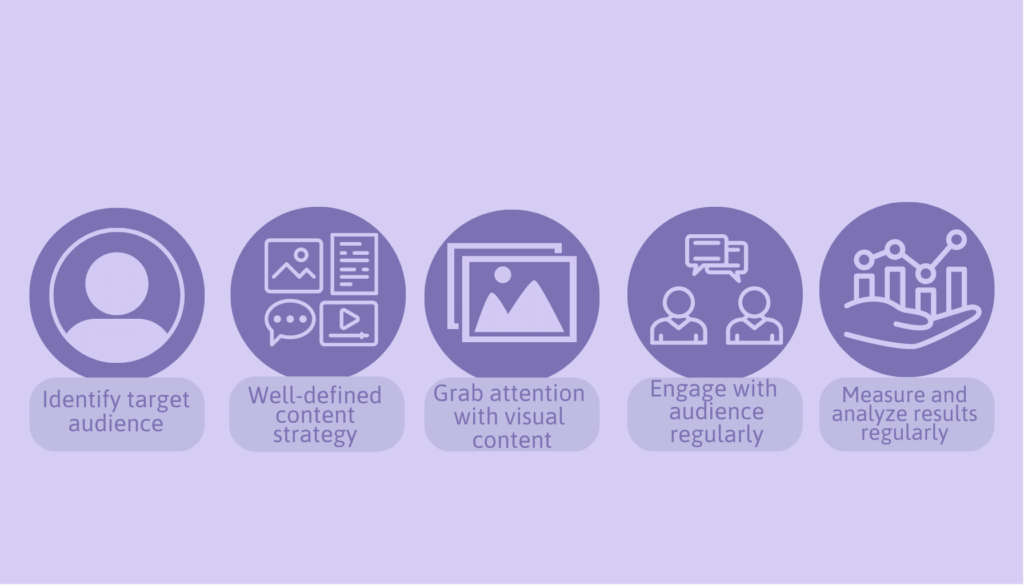
5. Influencer Marketing: Industry Leaders and Referral Programs
From Instagram to TikTok, influencer marketing has become an increasingly popular channel for B2B marketing in recent years. This strategy involves partnering with industry leaders or experts who have a significant following on social media or other platforms to promote your product or service. By leveraging the influencer’s credibility and authority, you can reach a wider audience and establish trust with potential customers.
One key advantage of influencer marketing in the B2B space is the ability to tap into highly targeted audiences. By identifying influencers who specialize in a particular industry or niche, you can ensure that your message reaches the right people. This can be especially valuable if you offer products or services with a high degree of specialization or technical complexity.
To succeed with influencer marketing, it’s important to follow some best practices. First, you should prioritize finding the right influencers who align with your brand and target audience. This means conducting research to identify influencers who have a strong following among the specific demographic or industry segment that you are trying to reach.
Secondly, establish clear goals and expectations for the influencer campaign. This includes defining the scope of the campaign, outlining the type of content the influencer will create, and setting metrics to measure the success of the campaign. By setting these parameters upfront, you can ensure that you are getting the most value from your influencer partnerships.
There are several platforms and services that can help you identify and partner with influencers. Examples include Upfluence, Traackr, and AspireIQ. These platforms provide tools for finding and vetting influencers, as well as managing campaigns and tracking performance.
Another approach to influencer marketing is through referral programs, like the Pathmonk Referral Program. This involves incentivizing existing customers or partners to refer new business to your company. By offering rewards or other incentives, you can encourage your network to spread the word about your product or service. This can be especially effective in the B2B space, where personal relationships and referrals often play a key role in decision-making.
6. Account-Based Marketing
Account-Based Marketing (ABM) is a targeted marketing approach that focuses on individual accounts or companies rather than broad audiences. ABM can be an effective strategy for B2B success because it allows you to tailor your marketing efforts to specific accounts that are more likely to convert into customers.
ABM Helps B2B Businesses By Allowing Them To:
- Focus on High-Value Accounts: With ABM, you can identify high-value accounts that are more likely to convert and then focus their marketing efforts on those accounts.
- Personalized Marketing Messages: ABM enables you to create personalized marketing messages for specific accounts, which can increase the likelihood of conversion.
- Align Sales and Marketing Efforts: By focusing on specific accounts, ABM can help align sales and marketing efforts, resulting in more efficient and effective communication with potential customers.
Effective ABM Strategies For B2B businesses Can Include:
- Account Selection: You should identify high-value accounts that are a good fit for your product or service. You can use criteria such as industry, company size, and revenue to determine which accounts to target.
- Personalization: Create personalized marketing messages that speak directly to the needs and pain points of your target accounts. This can include personalized emails, website content, and social media ads.
- Multi-Channel Approach: Use a variety of channels to reach your target accounts, such as email, social media, and direct mail.
- Sales and Marketing Alignment: Ensure that your sales and marketing teams are working together to create a seamless customer experience.
Some popular ABM tools to consider are Terminus, and Demandbase, which offer features such as account targeting, personalized content creation, and performance analytics. With various online resources, like the ABM Leadership Alliance and the ABM Institute, you can gather insights and best practices for implementing a successful ABM strategy.
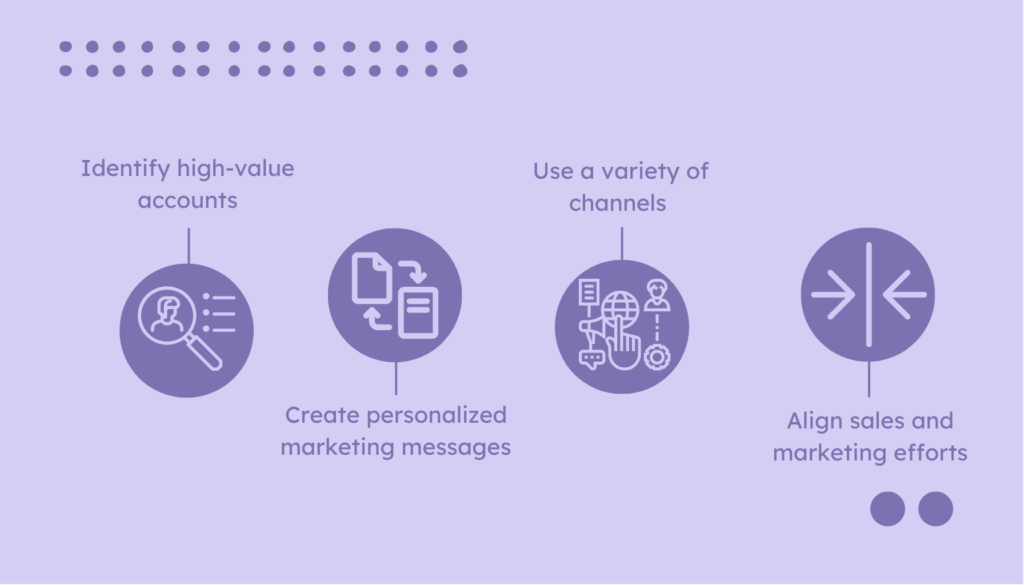
7. Events and Tradeshows
Events and tradeshows can be powerful tools for B2B success. Generate leads, build relationships, and showcase your products and services. These events provide an opportunity for you to connect with potential customers and industry peers in a face-to-face setting.
Here Are Some Ways Events and Tradeshows Can Help B2B Businesses:
- Events and tradeshows provide an opportunity for you to collect leads by interacting with attendees and exchanging contact information. By offering promotions or incentives, you can incentivize attendees to leave their contact details and potentially become future customers.
- You can connect with potential customers, industry peers, and other stakeholders in a more personal and meaningful way. By building these relationships, you can increase their visibility and credibility within your industry and potentially generate more business opportunities.
- They are an ideal platform for you to showcase your products and services. This can include demonstrations, product launches, and hands-on experiences that help attendees better understand what a business has to offer.
Here Are Some Best Practices for B2B Events and Tradeshows:
- Set Clear Goals: Before attending an event or tradeshow, it’s important to set clear goals and objectives. This could include generating a certain number of leads, building relationships with key industry players, or launching a new product.
- Develop a Strong Booth Presence: A strong booth presence can help you stand out from the competition and attract more attendees. This can include eye-catching graphics, interactive displays, and engaging promotional materials.
- Plan Ahead: Planning ahead is critical for success at events and tradeshows. This includes everything from preparing staff with training and messaging to shipping products and materials to the event location.
- Know Your Audience: It’s important to research and understand your target audience. This will help you tailor your messaging and promotional materials to appeal to their needs and interests.
- Network Strategically: Networking is a key component of events and tradeshows, but it’s important to do so strategically. Identify key players in your industry and focus on building relationships with them.
- Offer Value: Attendees are more likely to engage with you if you offer them value. Consider offering free resources or consultations, hosting informative sessions or demos, or providing exclusive discounts or promotions.
- Leverage Social Media: Social media can be a powerful tool for promoting your presence at an event or tradeshow, as well as for engaging with attendees before, during, and after the event. Consider using event-specific hashtags, posting live updates, and sharing photos and videos.
- Follow-Up: After an event or tradeshow, make sure to always follow up with all leads obtained from the event.
Event management software like Eventbrite, Cvent, and Bizzabo, can help with tasks such as ticketing, registration, and attendee management. Other tools such as lead retrieval systems and event apps can help you capture and organize lead information and engage with attendees, so make sure to check them in advance.

8. Corporate Website: Your Killer Converting Machine
A website is critical of course but ensuring that your website is optimized for conversions is critical to a successful B2B marketing strategy. It serves as the digital hub of a business, providing a centralized location for potential customers to learn about products and services, engage with the brand, and ultimately convert into paying customers. Without an optimized website, all efforts from other marketing channels can go to waste.
A well-designed and user-friendly website can help you establish credibility, increase brand awareness, and drive conversions. However, simply having a website is not enough. It must be optimized for conversion and provide a seamless user experience.
One solution that can help you optimize your website for conversions is Pathmonk Accelerate. Pathmonk Accelerate is an AI-powered marketing solution that engages with website users in real time based on their intent. It shows them micro-interactions such as pop-ups and chatbots that are hyper-relevant to their needs and interests, thereby providing a personalized experience.
Increase +180%
leads
demos
sales
bookings
from your website with AI
Get more conversions from your existing website traffic delivering personalized experiences.
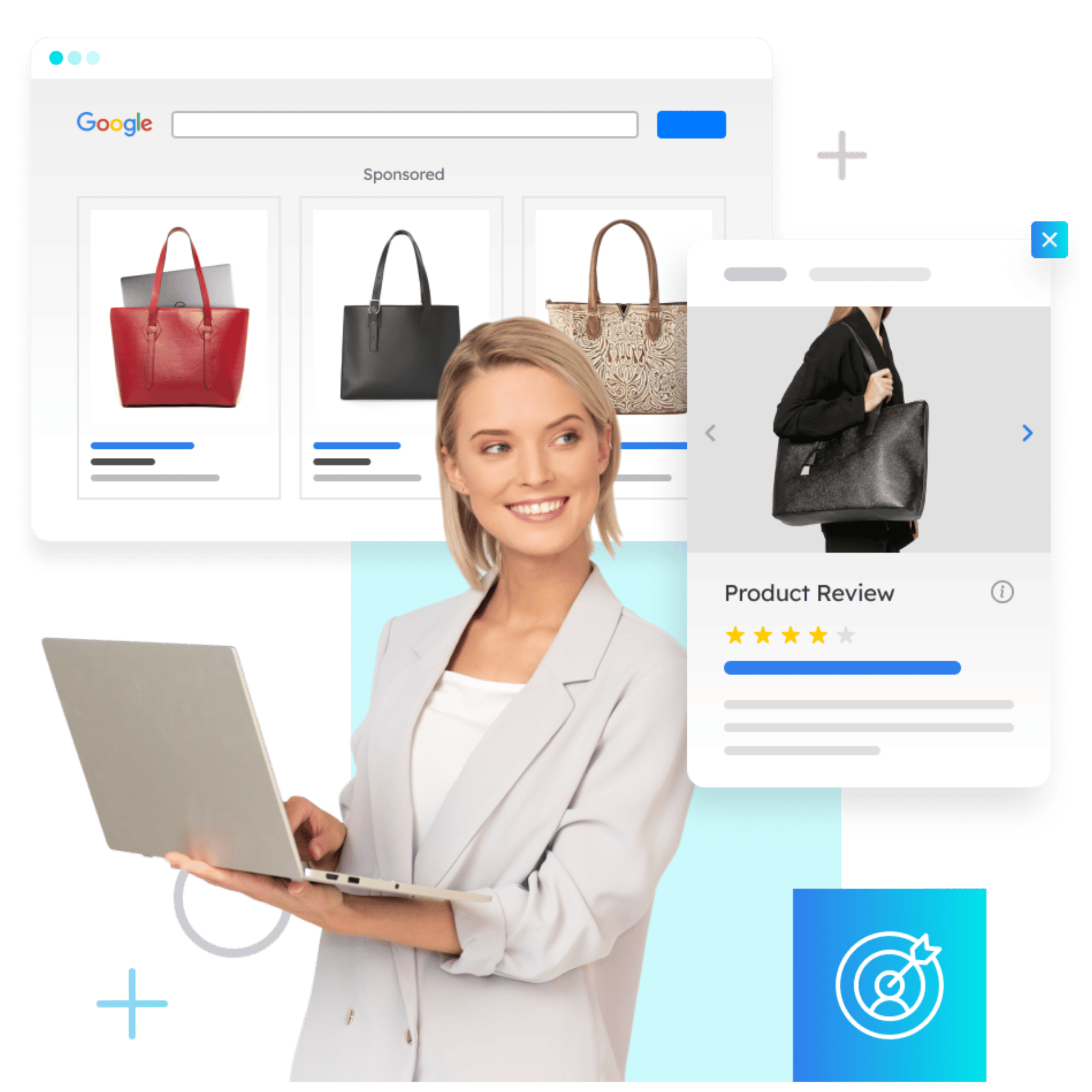
One of the key benefits of Pathmonk Accelerate is that it offers real-time hyper-relevant content to website users. By analyzing user behavior and intent, the solution can display personalized content and offers that are highly targeted to your user’s needs. This helps you keep users on your website longer and increase engagement.
Moreover, Pathmonk Accelerate provides valuable insights and analytics that can help you optimize your website and marketing strategies. The solution identifies user behavior and provides insights into which micro-interactions are driving engagement and conversions. This can help you identify which areas of your website and marketing strategies are working well and which ones need improvement.
Conclusion
B2B marketing is a complex and ever-evolving field, and you need to use a variety of channels to reach your target audience and drive conversions. While there are many marketing channels available, some are more effective than others for B2B marketing, such as email marketing, social media marketing, search engine optimization (SEO), pay-per-click (PPC) advertising, influencer marketing and referral programs, events, and tradeshows, account-based marketing (ABM), and, last but not least, having a killer corporate website optimized for conversion.
Each of these channels offers unique benefits and challenges, and you need to evaluate your specific needs and goals to determine which channels to focus on. However, by leveraging a combination of these channels, you can reach their target audience and drive conversions effectively. For example, content marketing can be used to drive SEO and social media engagement, while events and tradeshows can be used to build relationships with key industry players and generate leads.
Finally, it is important to continually evaluate and optimize marketing strategies to ensure they are effective in driving business growth. By leveraging data and insights from these channels, you can adjust your strategies and tactics to achieve your marketing goals.

